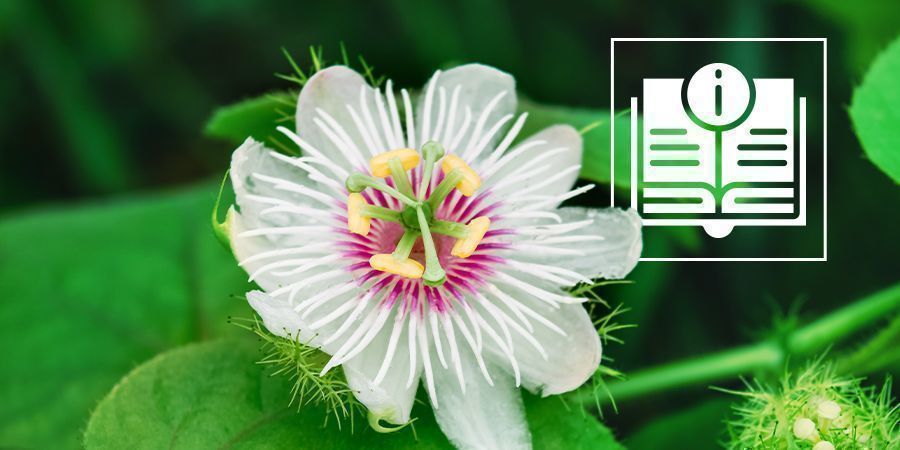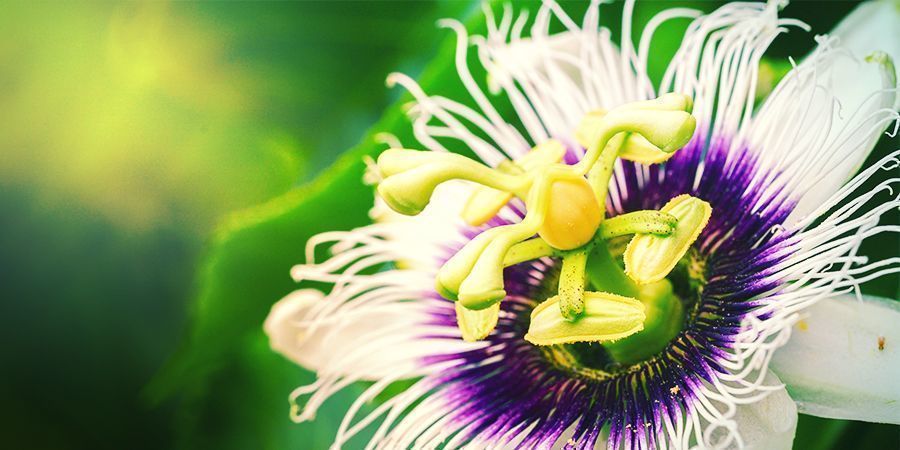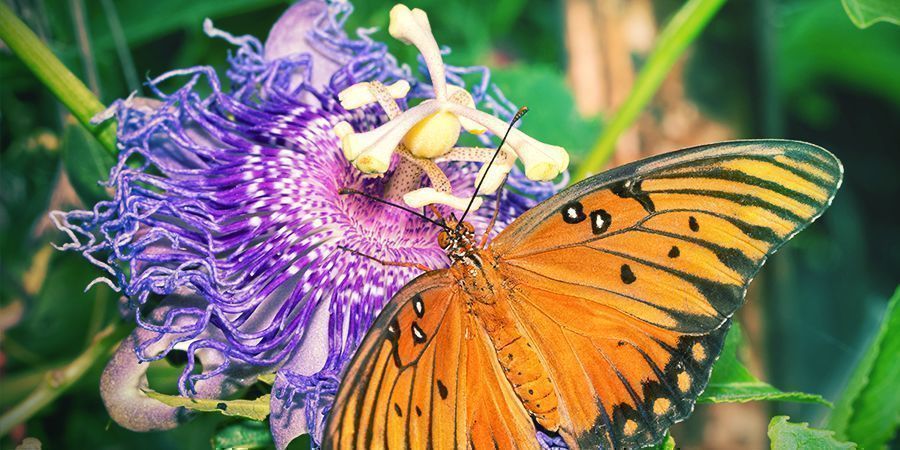-
Seedshop
-
Feminized
Cannabis seeds -
Autoflowering
Cannabis Seeds -
Regular
Cannabis Seeds -
F1 Hybrid
Cannabis Seeds -
CBD
Cannabis Seeds -
Zamnesia
Cannabis Seeds
-
Top 10’s
- Top 10 Feminized Seeds
- Top 10 Autoflowering Seeds
- Top 10 Regular Seeds
- Top 10 USA Cannabis Strains
- Top 10 Zamnesia Seeds
-
Favourites
- Beginner Strains
- Below 1% THC
- Classic Cannabis Strains
- Cup Winners
- F1 Hybrids
- Fast-Flowering Strains
- High CBD Strains
- High THC Strains
- Mix Packs
- Zamnesia Exclusive Collabs
-
-
Headshop
-
Vaporshop
- Spare Parts & Accessories
- AirVape X
- AirVape XS GO (2021)
- Arizer Air MAX
- Arizer Extreme Q
- Arizer Solo 2
- Arizer V-Tower
- Arizer XQ2
- Boundless CFC 2.0 Vaporizer
- Boundless CFX
- Boundless TERA (V3)
- CRAFTY+
- DaVinci IQ2
- DaVinci IQC
- DaVinci MIQRO
- Dr. Dabber Boost EVO
- Dr. Dabber Stella
- DynaVap Omni 2021
- DynaVap VapCap "M" PLUS 2023
- DynaVap VapCap 'M' 2021
- DynaVap VonG (i) Titanium
- Dynavap The "B" Series
- Eagle Bill
- Firefly 2+
- Flowermate Aura
-
Healthshop
-
Smartshop
-
Shroomshop
-
Growshop
-
Seedshop
All CategoriesSeedshop
-
Vaporshop
All CategoriesVaporshop
- Top 10 Vaporizers
- Spare Parts & Accessories
- AirVape X
- AirVape XS GO (2021)
- Arizer Air MAX
- Arizer Extreme Q
- Arizer Solo 2
- Arizer V-Tower
- Arizer XQ2
- Boundless CFC 2.0 Vaporizer
- Boundless CFX
- Boundless TERA (V3)
- CRAFTY+
- DaVinci IQ2
- DaVinci IQC
- DaVinci MIQRO
- Dr. Dabber Boost EVO
- Dr. Dabber Stella
- DynaVap Omni 2021
- DynaVap VapCap "M" PLUS 2023
- DynaVap VapCap 'M' 2021
- DynaVap VonG (i) Titanium
- Dynavap The "B" Series
- Eagle Bill
- Firefly 2+
- Flowermate Aura
- Flowermate Cap Pro
- Flowermate Slick
- Flowermate V5.0S Pro
- G Pen Connect
- G Pen Elite II
- G Pen Micro+
- G Pen Pro
- G Pen Roam
- Hydrology9 Vaporizer
- Hyer Big-E Rig
- MIGHTY
- MIGHTY+
- PAX Mini
- PAX Plus
- PLENTY
- Pax 3 Vaporizer
- Puffco Peak PRO Smart Rig
- Puffco Peak Smart Rig
- Puffco Plus
- Storm Vaporizer
- The Proxy (Puffco)
- VOLCANO CLASSIC
- VOLCANO HYBRID
- Vape-Lifter
-
Smartshop
All CategoriesSmartshop
- Top 10 Smartshop
- Zamnesia Gift Cards
- After Party
- Aphrodisiacs
- Aromatherapy
- Blue Lotus
- CBD Vape Juice
- Capsule Machines
- Crystals, Gemstones & Minerals
- Dream Herbs
- Drug Tests
- Extracts
- Happy Caps
- Herbal Tea
- Herbs & Seeds
- Incense
- Kanna
- Kratom
- LSA Seeds
- Mescaline Cacti
- Microdosing
- Nootropics
- Relaxing
- Salvia divinorum
- Smart Seeds
- Stimulants
- Supplements
- Tinctures
- Vape Herbs
-
TRIBE
All CategoriesTRIBE
- My Membership
- Spend Gift Points
- Exclusive products
- Earn Extra Gift Points
-
TRIBE
- Early Access
- Refer a Friend
- Information
-
TRIBE
-
Language
 United States
United States
Monday, 21 April and Friday, 25 April 2025*
Passionflower: Everything You Need To Know

Used for centuries by native peoples in South America for its many healthful and relaxing properties, passionflower can be considered a true miracle plant. Learn all you need to know about passionflower, find out about its benefits and effects, and how you can grow this gorgeous plant in your own garden!
What is passionflower?
Passionflower, also referred to as Maracuja or Maypop, is a genus of flowering plants in the family of Passifloraceae. It is found in the tropical rainforests and semi-tropical areas in South and North America, where it climbs up on other plants in the rainforest, using tendrils. There are over 500 species of passionflower vines, with the most common varieties found in the Amazon: passiflora edulis and passiflora incarnata.
Passionflower develops distinct, large, purple or white flowers that can be pink or purple in the centre. It was named by early Spanish missionaries, who thought that the appearance of parts of the flower represented the Crucifixion of Christ. Therefore, they called it “Flower of Passion”.
Some species of passionflower vine also produce a fruit about the size of a lemon, the passion fruit, which is also referred to as maracuja. Usually yellow or purple in colour, the fruit has a tough outer rind and a seedy centre and is well-known (Ingale & Kasture, 2017) for its high antioxidant content. The pulp of the fruit can be eaten or can be used to make drinks, sherbets and jams.
How passionflower got its name
Christian scholars described the flower as “La Flor de las cinco Llagas” (the “Flower with Five Wounds”), or “Flower of Passion”, as references to the passion and wounds of the Christ. For them, the five petals and the five sepals of the plant represented the 10 faithful apostles (excluding the not-so-faithful Peter and Judas), and the tips of the leaves resembled centurion’s spear. The central flower was a symbol for the pillar of the scourging and the tendrils of the plant resembled the whips used in the flagellation. The corona filament had been compared to the crown of thorns with the three stigmas of the plant representing the nails. The five anthers stood for the five sacred wounds and the red stains of the flower symbolized the blood of Christ.
Later, in 1745, Swedish botanist Linnaeus gave the plant the Latin name “Passiflora”, which is the name that is still used for the genus today.
How do you grow passionflower?

Many hobby gardeners love to grow passionflower for its exotic looks, although the plant can be quite picky, which makes growing her not always easy. In good conditions, passionflower vines can get up to 10m tall and about 2.5m wide, depending on the variety. Some varieties, however may grow more like shrubs and some may also produce edible fruit..
No matter what type of passionflower you want to grow, all of them will have beautiful flowers, which will normally only open for one day. Then again, the stunning beauty and the unique appearance of the flowers make passionflower always a delight to grow, even if you may only get a few flowers on each vine.
Since passionflower vines climb up on structures, it is a particularly great plant that can use beautify walls and fences in your garden.
How to plant your passionflower
Passionflower does best if you plant her in spring, in fertile, well-drained soil. The best way to go about planting would be if you get the plants from a nursery, although you could in principle also grow them from seed or from cuttings.
For planting, dig a large hole, about three times the diameter of the root ball. Take the plant out of the pot it came with and use a hose to wash the root ball, so that the roots are exposed. Carefully place the root ball into the hole and fill with your potting soil. Water, and afterwards also make sure to keep the flowers well-watered at all times.
If you don’t have a suitable spot in your garden to plant the vines, you can also grow passionflower in pots. Make sure you place them in a spot where the plants can get plenty of sunlight. If you don’t live in a tropical climate, you should bring the plants indoors during winter. The plants will show off their gorgeous flowers late in the summer.
History of the passionflower

For centuries, indigenous peoples of South America, including the Aztecs and Incas, cultivated passionflower for its fruit and the plant’s positive properties.
The story has it, that it was discovered in Peru in 1569 by Spanish missionaries. It is thought that the variety first encountered was passiflora caerulea, or blue passionflower, judging by drawings and literary accounts following the discovery.
Brought to Europe from South America, passionflower became a popular ornamental plant, in particular in Great Britain.
Today, the plant is still popular, not only among gardeners who like it for her striking and exotic appearance. Passionflower also plays an important role in herbalism.
Passionflower chemistry

Passionflower contains three main groups of active compounds, alkaloids, glycosides and flavonoids. It is noteworthy to mention that some of the compounds in the plant by themselves don’t have any notable postive properties on their own, as research has shown. Only in combination with the other chemicals in the plant, as they’re naturally occurring in the herb, are they displaying their benefits, such as their relaxing properties.
Research has identified many different compounds in the passionflower including alkaloids, alpha-alanine, apigenin, aribine, chrysin, citric acid, coumarin, cyclopassifloic acids A-D, cyclopassiflosides I-VI, diethyl malonate, edulan I, edulan II, flavonoids, glutamine and gynocardin. It also contains harmane, harmaline, harmalol, harmine, harmol, homoorientin, isoorientin, isoschaftoside, isovitexin, kaempferol, loturine, lucenin-2, lutenin-2, luteolin, n-nonacosane, orientin, passicol, passiflorine, passifloric acid, pectin, phenolic acids, phenylalanine, proline, prunasin, quercetin, raffinose, sambunigrin, saponarin, saponaretin, saponarine, schaftoside, scopoletin, serotonin, sitosterol, and stigmasterol.
Tips

The exotic passionflower catches not only the attention of humans, which makes it a fabulous plant if you want to accent your home’s front door area. The flowers will also attract butterflies, who love the plant just like we do. Plant them together with other butterfly-attracting plants such as butterfly bush, ironweed, goldenrod or yellow cone flowers and you will get beautiful butterflies in your garden all summer long!
There are many varieties of passionflower that you can grow in your garden. Depending on the variety, their flowers can be yellow, orange, deep red or purple. One particular type of passionflower, “Raspberry Strudel”, produces striking flowers that blend beautiful pink and red colours.
If you want to plant a variety that also produces fruit, check out the Passiflora edulis (“edulis” stands for edible). One popular variety is the Maypop (Wild Apricot), which you can often find as a wild flower in the Southern US. She got her name because the fruits “pop” when you step on them.

- Ingale, S. en Kasture, & S. (2017). Protective effect of standardized extract of Passiflora incarnata flower in parkinson’s and alzheimer’s disease. Ancient Science of Life, 36(4), 200. - https://www.ncbi.nlm.nih.gov
- France
- Germany
- International
- Italy
- Netherlands
- Spain
- United Kingdom
- United States
You might also like
-

 4 min
21 January 2022
Top 10 Tobacco Alternatives For Spliffs
Tobacco helps spliffs to burn evenly and slowly, but the high nicotine content can cause users to become overstimulated. Why not explore the vast world of herbs for a fitting alternative? The 10 plant ...
4 min
21 January 2022
Top 10 Tobacco Alternatives For Spliffs
Tobacco helps spliffs to burn evenly and slowly, but the high nicotine content can cause users to become overstimulated. Why not explore the vast world of herbs for a fitting alternative? The 10 plant ...
-

 5 min
30 April 2020
10 Best Herbs To Brew A Tea With
At least since the ancient Egyptians, herbs have been brewed into tea. Teas can be used as stimulants and sedatives or even as aphrodisiacs. Use vaping herbs to make teas that can be beneficial in sev ...
5 min
30 April 2020
10 Best Herbs To Brew A Tea With
At least since the ancient Egyptians, herbs have been brewed into tea. Teas can be used as stimulants and sedatives or even as aphrodisiacs. Use vaping herbs to make teas that can be beneficial in sev ...
Categories
-
Seedshop
- Feminized Cannabis Seeds
- Autoflowering Cannabis Seeds
- Regular Cannabis Seeds
- F1 Hybrids
- CBD Seeds
- Zamnesia Seeds
- Top 10 Autoflowering Seeds
- Top 10 Regular Seeds
- Top 10 USA Cannabis Strains
- Top 10 Zamnesia Seeds
- Top 10 Feminized Seeds
- Beginner Strains
- Below 1% THC
- Classic Cannabis Strains
- Cup Winners
- F1 Hybrids
- Fast-Flowering Strains
- High CBD Strains
- High THC Strains
- Mix Packs
- Zamnesia Exclusive Collabs
- Amnesia Seeds
- Blueberry Seeds
- Cheese Seeds
- Diesel Seeds
- Gorilla Seeds
- Haze Seeds
- Kush Seeds
- Purple Seeds
- Skunk Seeds
- White Widow Seeds
- Zamnesia Seeds
- ACE Seeds
- Advanced Seeds
- Amsterdam Genetics
- Anesia Seeds
- Auto Seeds
- Barney's Farm
- Big Buddha Seeds
- Bomb Seeds
- BSB Genetics
- BSF Seeds
- Buddha Seeds
- Bulldog Seeds
- Cali Connection
- Cannarado Genetics
- CannaBioGen
- CBD Crew
- CBD Seeds
- Compound Genetics
- The Dank Seeds
- Dark Horse Genetics
- Delicious Seeds
- Devil Harvest Original
- Dinafem
- DNA Genetics
- Doctor's Choice
- Dr. Underground
- Dutch Passion
- Elite Seeds
- Eva Seeds
- Exotic Seed
- Expert Seeds
- FastBuds
- Female Seeds
- Fenocan
- Flash Auto Seeds
- French Touch Seeds
- Garden of Green
- GeneSeeds
- Genehtik Seeds
- G13 Labs
- Grass-O-Matic
- Greenhouse Seeds
- Grow Your Own (DNA)
- Growers Choice
- Homegrown Fantaseeds
- House of the Great Gardener
- Humboldt Seed Company
- Humboldt Seed Organization
- Kalashnikov Seeds
- Kannabia
- The Kush Brothers
- Light Buds
- Little Chief Collabs
- Medical Seeds
- Ministry of Cannabis
- Mr. Nice
- Nirvana Seeds
- Original Sensible
- Paradise Seeds
- Perfect Tree
- Pheno Finder
- Philosopher Seeds
- Positronics Seeds
- Purple City Genetics
- Pyramid Seeds
- Rare Dankness
- Reggae Seeds
- Reserva Privada
- Resin Seeds
- Ripper Seeds
- Royal Queen Seeds
- Sagarmatha Seeds
- Samsara Seeds
- Seedstockers
- Sensation Seeds
- Sensi Seeds
- Serious Seeds
- Silent Seeds
- Soma Seeds
- Spliff Seeds
- Strain Hunters
- Sumo Seeds
- Super Sativa Seed Club
- Super Strains
- Sweet Seeds
- T.H. Seeds
- Top Tao Seeds
- Vision Seeds
- VIP Seeds
- White Label
- World Of Seeds
- Zativo Seeds
- Seed Banks
-
Headshop
-
Vaporshop
-
Healthshop
-
Smartshop
- Top 10 Smartshop
- Zamnesia Gift Cards
- After Party
- Aphrodisiacs
- Aromatherapy
- Blue Lotus
- CBD Vape Juice
- Capsule Machines
- Crystals, Gemstones & Minerals
- Dream Herbs
- Drug Tests
- Extracts
- Happy Caps
- Herbal Tea
- Herbs & Seeds
- Incense
- Kanna
- Kratom
- LSA Seeds
- Mescaline Cacti
- Microdosing
- Nootropics
- Relaxing
- Salvia divinorum
- Smart Seeds
- Stimulants
- Supplements
- Tinctures
- Vape Herbs
-
Shroomshop
-
Growshop
- Top 10 Growshop
- Top 10 Plant Seeds
- All Seeds
- Cacti
- Chili & Pepper Seeds
- Companion Plants
- Edible Plant Seeds
- Exotic Seeds
- Flower Seeds
- Fruit Seeds
- Herb Seeds
- Interior Plant Seeds
- Microgreens
- Psychoactive Plant Seeds
- Sprouting
- Vegetable Seeds
- Wellness Plant Seeds
- After Harvest
- Climate Control
- Fertilizer
- Grow Tents
- Harvest, Dry & Cure
- LED Grow Lights
- Plant Seeds
- Propagation
-
Merchandise
-
Sale section
Account
Information
Our Offers
Our website won't work without these cookies activated. Therefore functional cookies can't be disabled.























